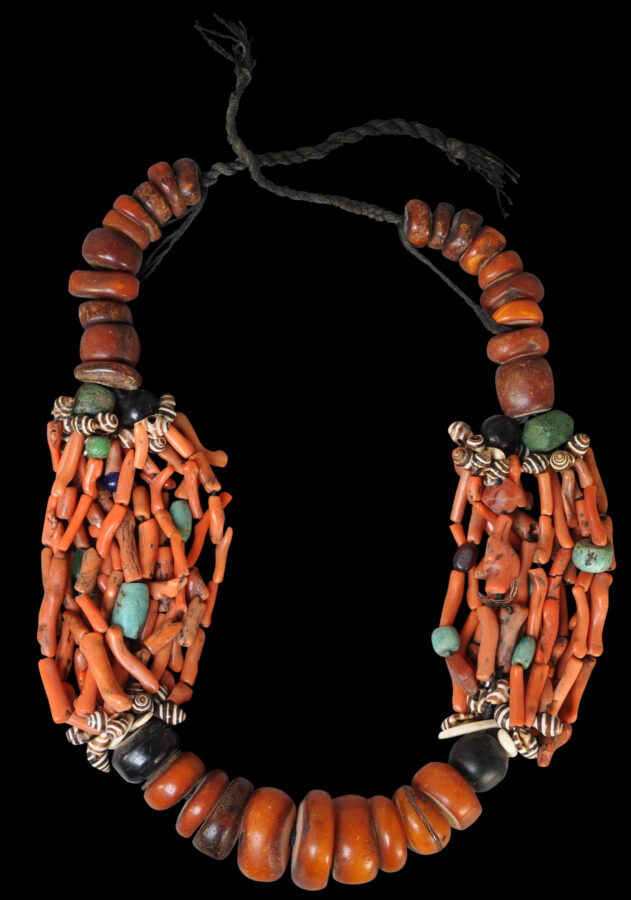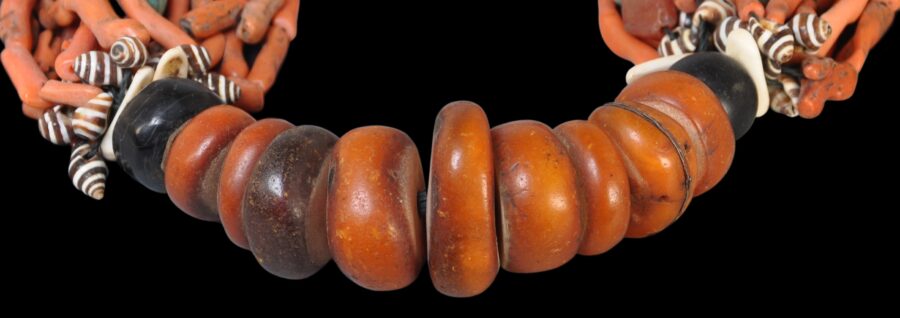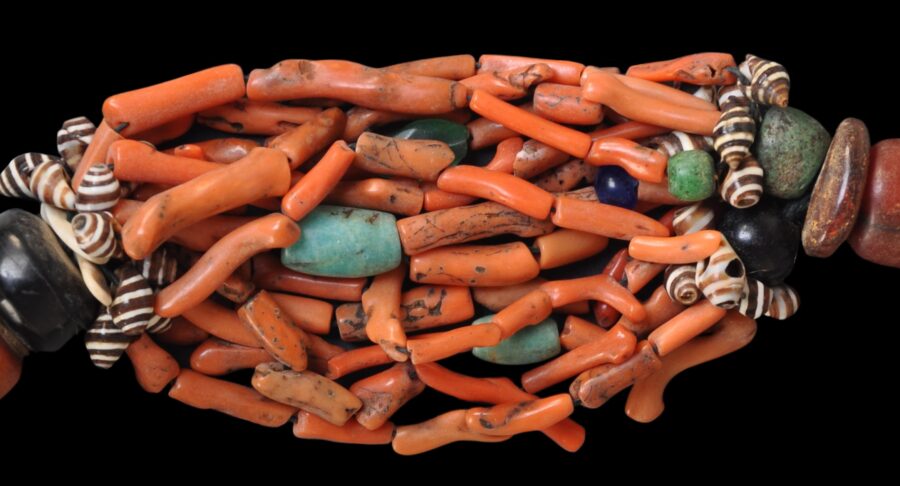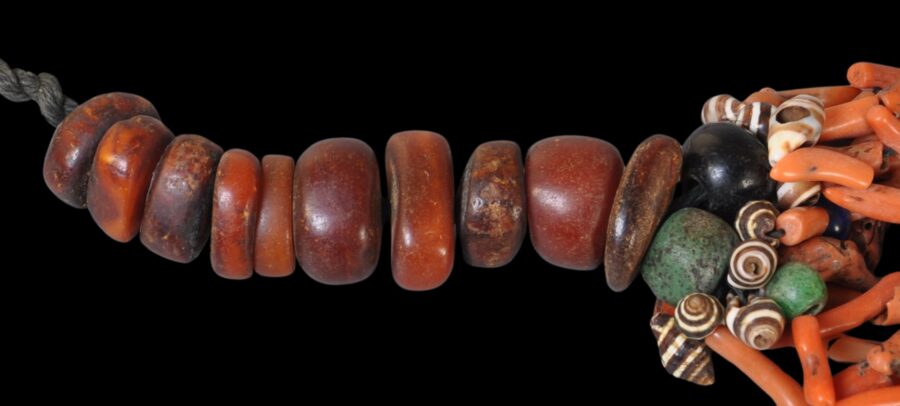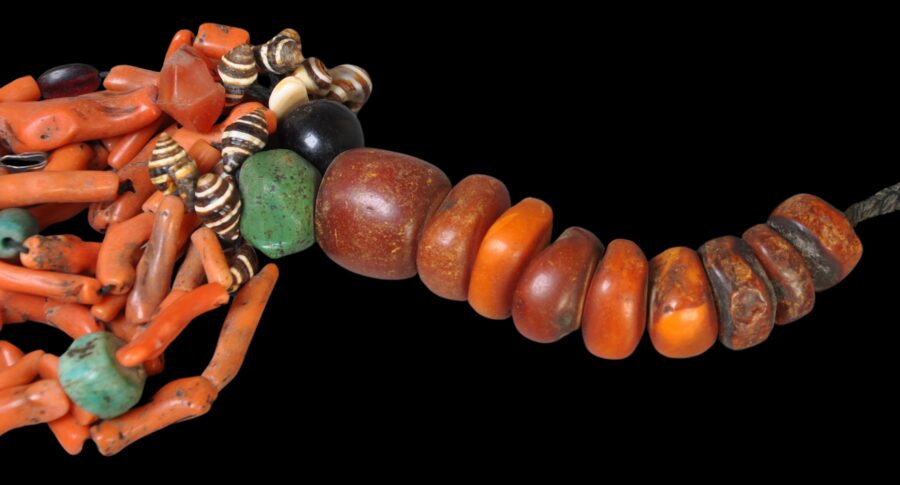Enquiry about object: 9779
Superb & Original Moroccan Berber (Amazigh) Amber Bead Necklace
Amazigh or Berber People, Draa Valley, Southern Morocco latest stringing: mid-20th century from earlier elements
overall length of beaded segments: approximately 65cm, diameter of the largest amber bead: 4cm, weight: 414g
Provenance
private collection, Germany; collected in the 1980s
This fine necklace is from the Berber People of the Draa Valley in southern Morocco. It is in its original state, with its original threading and, unlike many extant available examples, has not been amended or added to in any way other than by the original owner. Probably it was last restrung locally around 1950. Commonly, when a necklace was restrung, elements were added to many (much) earlier elements by its traditional owner. Such restringing is part of such a necklaces story and authenticity and often occurred with life changes and changes in economic circumstances of the the owner. This is very different to later re-stringing by dealers in Morocco to enhance, in their view, the appeal of such a piece for a Western audience.
This particular example also has additional stringed sections in the interior upper sides of the necklace. These permitted a cord to be tied across the necklace to effectively shorten it and the amber ‘tails’ of the necklace would then be worn loose down the wearer’s back. This is rarely seen in extant examples now.
Such necklaces were among the most valuable items many Berber women would own. As their wealth increased, they might add elements to the necklace over their lifetime. Similarly, if they needed money they might remove several elements and sell them to raise money.
It comprises at least 25 amber beads; large segments of Mediterranean coral; amazonite beads; and small striped sea snail shells. Also there are several large black spherical beads known locally in Morocco as tak tak beads. These were highly prized and have become so sought after in Morocco that they are now sold on a per gram basis rather than by bead. They are likely to be Dutch and possibly French glass trade beads dating to the 17th century.
The amber beads are old, authentic and unprocessed. One of the amber beads has old repairs – it has cracked and metal strips have been applied over the cracks to hold the bead together. Such repairs are much sought after – the repair itself has patina. Old, native repairs such as have tended to make the amber even more desirable as its underscores its age, authenticity and value to the women who owned it. Leather spacers have been used between the main beads to protect them from rubbing against each other. Again, this is a testament to the value attached to such beads.
Related examples are illustrated in Hoek (2004, p. 29) and Draguet (2020, p. 396) – although the latter illustrated example has been added to and no longer is in its original state unlike our example here.
The necklace elements are flecked with remnants of scented paste which traditionally was applied to jewellery worn by women. It was applied not only for its scent but also for spiritual and aphrodisiac purposes. Pastes were ordered from specialist mixers and the recipes varied from retailer and also by purpose, but a typical recipe for such a scented paste might include rose petal powder, jatamansi (also known as spikenard or nard) powder, agarwood powder, mahlab powder, ground cloves, ground amber perfume block, gum Arabic powder, rosewater, ambergris tincture, geranium oil, rose essential oil, and neroli essential oil.
The necklace retains its original stringing which is traditional plaited cotton stringing.
Overall, it is a rare and utterly authentic necklace of a type now difficult to come by. It contains many rare, valuable and large elements, and as mentioned, it is in its authentic state.
References
Draguet, M., Berber Memories: Women and Jewellery in Morocco, Mercatorfonds, 2020.
Hoek, C., et al, Ethnic Jewellery: From Africa, Asia and Pacific Islands, Pepin Press, 2004.


